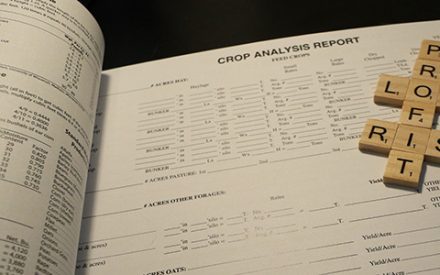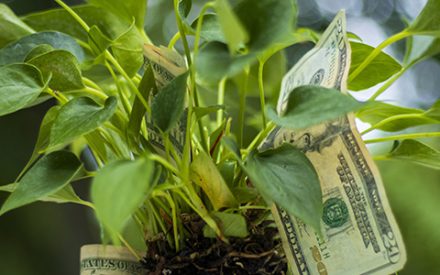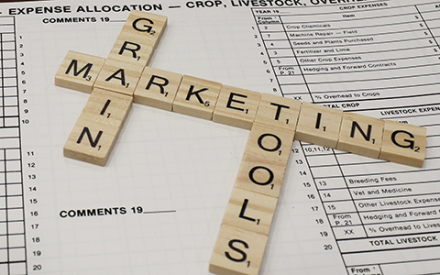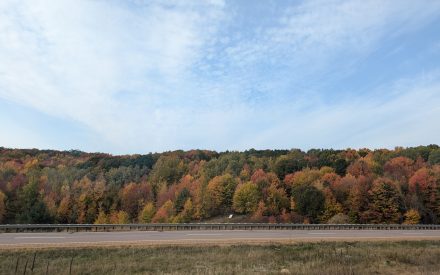Video Summary
In this video, Kevin Jarek, regional crops educator for Outagamie and Winnebago Counties, explains how to determine the value of standing forage, specifically alfalfa. He outlines the key factors needed for accurate valuation, including expected dry matter yield, estimated value per ton of dry matter, and harvest costs.
Kevin discusses methods for assessing stand density, average yield per cutting, and total season yield. He emphasizes the importance of considering weather risks, field losses, and the condition of the alfalfa stand. The presentation includes practical examples and data from recent growing seasons to illustrate how to calculate the value of standing forage and make informed decisions about purchasing hay.
Resources
Transcript
0:05
Thank you, Liz.
0:05
So we’re going to talk about determining the value of standing alfalfa.
0:08
I’ve got a lot of photos.
0:10
When we look at three pieces of information that are required to go ahead and accurately determine what the value of standing hay is, we need to know the expected dry matter, the yield in tons per acres, the estimated value of a ton of dry matter, and the harvest costs.
0:27
If you have a scale on the farm that is fantastic, you’ve already got one of the most difficult parts done.
0:33
The problem is we have a lot of educators and farmers and AG professionals across the state who will make a deal concerning a field of hay and they do not have access to a scale.
0:45
If you do have access to a scale, weigh it, pull a forage sample, get that moisture tested, and you’ll be able to determine your yields.
0:53
For those who don’t, here are the things you need to consider.
0:56
We need to look at the stand density.
0:58
We need to look at the average yield per cutting, the expected total season yield, weather risks and field losses.
1:05
Determine the value of a ton of dry matter and the harvesting costs.
1:09
So most of the people who are on today are aware that if we have 55 stems or more per square foot, we don’t have a limiting factor as far as dry matter yield.
1:18
Unfortunately, we do have some stands out there that are going to fall into those lower categories that you see identified of 40 to 55 and possibly less than 39.
1:28
Going out to fields and surveying here in Northeast Wisconsin.
1:31
Here’s what I found talking with crop consultants and others as well.
1:35
If you are talking about new seeding, first full production year, second production year, stands are fine.
1:42
When you look at some of these third, fourth, sometimes five years, these stands are out there.
1:47
There was some potential damage that occurred this winter.
1:50
This is not the year to do windshield crop scouting.
1:53
When it comes to making a deal for purchasing hay out of the field, you can clearly see the difference between the two stands.
2:00
The fact that this is a third production year stand is concerning.
2:03
We wouldn’t have expected it to deteriorated as much as you see there now.
2:08
Leaving winter cover usually helps, but not in all cases.
2:12
You can see that on the right hand side we’re in good shape, but on the left hand side the damage was done in the fall last year and winter did not help.
2:23
Typically people will assess stands by throwing a one foot ring, as you can see on the left hand side or two foot square.
2:29
When we have these difficult fields, I would recommend the two foot square for the reason you can obviously see, with the one foot, there’s going to be far more variability.
2:38
It’s going to be feast or famine, whereas with the 2 foot you get a more representative sample of what’s out there.
2:44
These two plants came from that square that you just saw, classic horseshoe.
2:49
On the left hand side you can see there was crown damage, probably from wheel traffic compaction, wet soils.
2:56
That plant is not going to perform the way it should.
2:59
On the right hand side, while that plant appears to be healthy, you can see there these large stems.
3:05
There’s only eight of them there.
3:07
So alfalfa puts its buds on in the fall for next spring’s growth.
3:12
The problem is that particular plant ended up having the majority of those buds killed.
3:17
8 of them survived and started growing right away.
3:20
But you can see in the lower mass it’s having to start over.
3:23
So we’re a little bit off as far as our timing.
3:26
When we look at the historical yields as far as the past 18 growing seasons, you can see this past year, 5.13 tons of dry matter is a record over the life of this project and that’s attributed to all the precipitation we had, certainly not a normal year as far as what we would expect.
3:48
I tell people that when you look on the left hand side here, 4 1/2 tons seems to be our average over the course of the project.
3:56
You can see 4 to 4.9 is the most numerous, followed by 4.5 to 4.99.
4:03
On the right hand side.
4:04
You see what happened last year.
4:06
We didn’t have any fields under 4 tons of dry matter.
4:09
That just doesn’t happen and I wouldn’t expect it to happen this year given what we see in the fields.
4:15
When you look at purchasing alfalfa, asking the question how many cuttings is important, You can see the differences between a three cut, 4 cut and five cut system 4 cuts the most common.
4:28
So we’ll go there.
4:29
The mean is 36% first cuts, 25% of the yield in the 2nd, 21 in the third and 18 in the 4th.
4:36
Last year you can see 41% was in that first cut yield.
4:41
And then on the right hand side you can see we also expect that alfalfa stand to increase in production after the first production year into the second.
4:51
But then it slowly begins to decline once we reach that third year and 4th year.
4:56
And you can see that highlighted and illustrated there.
4:59
I would expect in some fields those numbers are going to be higher than what you see there.
5:05
You can see the 2.08 being a record yield as far as what we typically find four first cutting usually about a ton and a half, 1.84 was the previous record.
5:18
When you look at the 2005 or excuse me, the 2024 numbers, you can see we were slightly above average second cutting, slightly above third.
5:27
But then we got hot and dry when 4th cutting rolled around.
5:31
And that’s important because that actually can impact what we’re going to see moving forward here.
5:38
Here are the consequences of the 2024 alfalfa harvest season.
5:41
You saw these photos, I’ve shared them before, but again, they provide context for what it is that we are dealing with this growing season.
5:51
And unfortunately, you can see the yield losses that are showing up.
5:55
This is what I was concerned about as I was watching harvest take place last growing season.
6:01
I thought there were four years where we’re less than 4 tons of dry matter, 2009, 2013 and 2020.
6:07
The what caused that is each of the preceding years there was a environmental stress.
6:13
2008 was Lake Delton burst down in Wisconsin Dells very wet.
6:17
2012 was a drought and 2019 was the worst growing season in 50 years.
6:21
So no surprise the alfalfa did not perform well the following year.
6:25
Well, here’s what we’re finding out in those fields.
6:27
Again, you can see this is a plant I showed you earlier.
6:31
You can see that we have growth occurring.
6:34
But look it on the right hand side, all that growth in the lower canopy, which we’re glad to have because the plant didn’t die, but it’s definitely behind because it had to start over with those on new spring buds it put on.
6:47
Here’s a problem with that horseshoe plant.
6:49
You can’t hardly see any new growth being put up in the center of that plant.
6:54
On the last photo on the right hand side, you can see the white fleshy healthy root in the good plant that’s just behind versus the brown, dingy, squishy troubled root that we have with that horseshoe plant.
7:10
I would say this year would be one that you really need to watch some of these fields because of the damage.
7:15
Take a look at the weeds that are in there.
7:17
Here we’ve got a photo and you can see the white dandelions headed out.
7:20
Dandelions have a slight impact on on yield quality.
7:23
They’re palatable.
7:24
Cattle aren’t going to turn their nose up.
7:26
But if we have some of those serious weeds, they’re the annuals, foxtail, ragweed, smart weeds, those things are going to impact quality.
7:35
Last year the biggest problem we had when we were doing peak scissors clip was all the rain.
7:40
And what we noticed is our values dropped very, very quickly.
7:44
And the reason for that is when we talk about lepto leaf spot and common leaf spot, which could be found on the bottom of many of those lodged alfalfa plants for first cutting, those leaves will eventually dry out and they will abscess, they’ll fall off from the plant and that causes our quality decline.
8:03
So here was a year ago, this is the difference that just five days can make.
8:08
You can see on May 23rd versus May 28th, how much or how huge of a significant decline in RFQ we suffered as a result of that LFL remaining in the field.
8:19
That’s on top of the harvesting losses we normally experience when we talk about pricing alfalfa.
8:24
We have to look at supply and demand.
8:25
And here you can see hay stocks were up significantly across the United States, 6.3%.
8:31
Wisconsin was up 90.8%.
8:34
Remember that when it comes to pricing, here’s a historical figure looking at where we’ve been since 2000.
8:40
We’re probably never going back to the 2000 aughts as it relates to alfalfa supplies.
8:45
It’s not going to happen.
8:46
But you can see we have been coming off our recent lows, 22/23/24 moving upward.
8:54
When it comes to establishing a fair price, we use the Haymarket report for the Upper Midwest and large squares 151 prime.
9:02
You can see the average price there was $162.00.
9:06
So that’s what we’re going to use for the example.
9:09
I’ll share in the example.
9:11
We also have to figure out what our field losses are.
9:14
Previously, I had suggested a number of 25%, but this past year we did at peak scissors clip, pulled a sample when that hay was cut and hit the ground.
9:25
Then we pulled a sample after it was harvested.
9:28
And what you can see here is we had crude protein losses of 10.4 and 13.3% in two sets of data, one from Outagamie/Winnebago, 5 fields, the other from Brown/Kewaunee/ Door where we had 6 fields.
9:43
And you can see that those numbers aren’t anywhere near 25%.
9:47
In fact, we’re averaging less than 15%.
9:51
So what we do is we take the $162.00 price.
9:55
We convert for dry matter.
9:56
Yes, I know that dry hay stored over the winter is going to be .87 dry matter, 13% moisture.
10:03
But when we’re talking in season, I’m far more comfortable using 15%.
10:07
So we convert and we end up with $191.00 a ton of dry matter.
10:12
If we apply a 15% risk adjustment, then you can see how we do that.
10:16
It comes up to $28.65.
10:18
We pull that off of the the value and you get a price of 162 per risk adjusted ton.
10:23
Now some of you may bail hay and you’ll have higher field losses.
10:28
Here’s how we would do that.
10:29
If you applied a 20% risk adjustment, you can see 191 * 20% is $38.20.
10:36
We called it $38.00. $191 – $38.00.
10:39
Your new risk adjusted price would be $153.00, so we need to know what our harvesting costs are.
10:45
Wisconsin is in the process of updating those numbers.
10:48
You can see $15.00 to $16.00 per acre and $13 an acre.
10:53
That’s for cutting operations and merging.
10:56
That’s included in a table here in the Pricing Alfalfa Determining a fair price for alfalfa document.
11:02
You can download that off of the Crops and Soils website and you’ll see the prices here.
11:08
I’ve leaned towards Wisconsin, but also included the Iowa rates as well.
11:12
But since we have new Wisconsin data, I figured we might as well take it.
11:17
Harvesting for chopping, hauling, filling, we average $65 an acre on that end.
11:22
Please remember to take into account this is last year.
11:25
If you have extra field operations here you can see they had to use dump carts because those trucks weren’t going to get through the field.
11:31
You need to add that or take that into account as well.
11:34
So here’s an example of 4 1/2 tons of dry matter.
11:37
We take that by the percentage yield for each of the cuttings.
11:41
As you can see there, 36% for first cutting, we take the total value residual which would be $262.44 minus our harvest cost.
11:50
We get a net of $168.44.
11:53
These are estimated values.
11:55
You can see first cutting $168.00, second $88.25, third $60.00, approximately 4th $40.
12:02
Some of you may take issue with the later cuttings, but we’ve had drought these last couple of years and I can tell you that when you look at the harvesting cost running across some of these fields, you’re not picking up a lot, a lot of hay.
12:15
We do have a chart that is Excel file in the document itself and it lays out all of those different ranges from 4 tons to 6 1/2 tons of dry matter and breaks it down by individual cuttings.
12:29
So you do not have to do that yourself.
12:32
Last, I want to give a shout out to Scott Newell, our former Alfalfa Outreach Specialist.
12:38
His his topic was always persistence is profit.
12:41
You need to figure out in a transaction who is replacing that potassium in the field.
12:47
Here you can see a chart that’s included in that newly posted document that explains or identifies how much cost there is to removing that from each of those.
12:58
So with that, I’m going to go ahead and stop sharing and I will take any questions if there are any.
Badger Crop Connect
Timely Crop Updates for Wisconsin
Second and fourth Thursdays 12:30 – 1:30 p.m.
Live via Zoom

 ▶ Fall 2025 Financial Assistance for Producers
▶ Fall 2025 Financial Assistance for Producers ▶ Fall 2025 Ag Policy Update
▶ Fall 2025 Ag Policy Update ▶ Fall 2025 Corn and Soybean Market Outlook
▶ Fall 2025 Corn and Soybean Market Outlook ▶ November 6 Ag Weather Outlook for Wisconsin
▶ November 6 Ag Weather Outlook for Wisconsin


